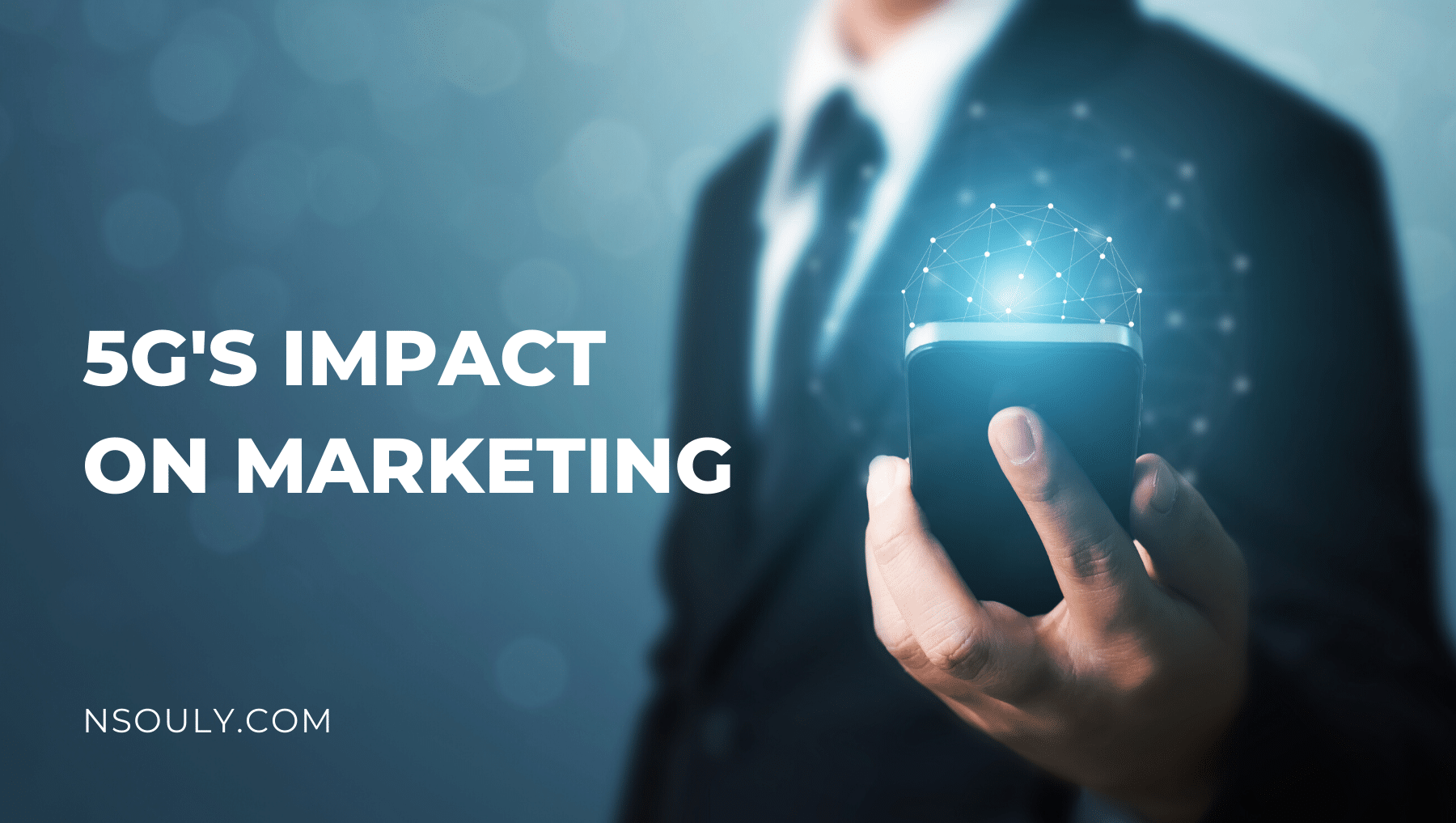The Transformational Impact of 5G on Marketing
5G wireless transmission is not a thing of the future anymore. It has arrived and it is bound to bring a major change in the way that marketers advertise their products and services. 5G will do much more than simply improve connectivity. It’s capable of reshaping everything and that includes the way products are marketed and advertised to consumers as well.
Table of Contents
5G’s Impact on Marketing: All You Need to Know
Nearly twenty-four wireless carriers have launched 5G services in 2019. This also includes major carriers in the US. Verizon has already launched its 5G enabled home broadband service. AT&T is on the bandwagon too. It’s 5G enabled networks became available halfway through 2019. So many brands are trying to tap on this market.
Experts say that the adaptation of 5G will be faster than 4G. The 5G legislation for wireless companies to streamline zoning regulations are set too. 5G is going to deliver 1 to 10 gigabits per second which is 100 times faster than 4G LTE. Yes, there’s that big of a difference. What this means is that latency levels will drop significantly. No doubt, 5G has the potential to change the prevailing digital landscape in unforeseen ways.
What will 5G do to cable?
The managing director of J.D. Power, Ian Greenblatt has predicted that set-top boxes and cable connections might be rendered irrelevant by the advent of 5G. With the type of speed mentioned above, your TVs are going to be ready to pick HD and 4K programming wirelessly.
This is going to be a major disruptor for the cable and ISP industry because the wired infrastructure will not be necessary for delivering high-speed Internet. 5G will build something more profound. Any screen that uses the 5G wireless transceiver will become a high-resolution screen. In other words, it’ll become an outlet for intelligent computing.
Ways 5G Will Impact Marketing and Advertising
Here are a few ways in which 5G is going to make an impact on marketing and advertising:
The rise of video advertising
Video is one of the most widely consumed forms of content on the Internet already. Since 5G will reduce the page load time and buffering, it’ll increase video consumption. Cisco visual networking index white paper says that video traffic will account for 82% of the entire web traffic by 2022. EMarketer says that mobile video is going to be the primary driver of digital video ad revenue growth.
5G will have a massive impact on video. Users will be able to stream extremely high quality videos at previously unimaginable speeds. Marketers will have to do their due diligence to create awesome video content.
Interactive ads
Bounce won’t be a drag for website owners whether a user is browsing through their site’s desktop or mobile versions. Now, advertisers will have many opportunities for creating compelling high-resolution ads for engaging customers. 4K videos and live streaming will become the norm.
More data means more personalization
When regularly used devices are connected with 5G, this will generate an unprecedented amount of data. And if marketers get access to high-quality user data, it will help them understand the needs of their customers better. They can even do that in real-time. It also opens the door for personalized advertising.
Advertisers can create personalized ads to engage with customers at the right time and place with the help of granular and advanced location-based advertising. A great example of that would be a smart refrigerator that can detect that a particular food item is out of stock and then promote an ad for the same item around the customer’s dinner time.
Voice control will take the lead
People are using voice assistants for search queries. Whether it’s scheduling their activities or creating lists, they’re using voice control for love/money/everything they like. The sales of smart speakers have increased too. With 5G, you can actually take the virtual assistant wherever you go.
The mobile advertising industry is about to transition to depend more on voice conversations. Advertising agencies will need to explore different formats and ways for tapping into voice-based advertising.
Augmented reality will take over
Augmented reality is becoming a mobile staple. A survey from Oath says that 85 percent of consumers believe 5G will benefit from AR.
In the coming days, don’t be surprised to see a car’s dashboard projecting ads. This will open up a number of opportunities for advertising. For such a seamless experience, a network with lower latency, high system capacity, and more consistency is required. And 5G is exactly the solution.
Plenty of runway for marketers
Thanks to 5G, our innovating space is becoming bigger and better. The introduction of next generation Wi-Fi is going to lead to the introduction of next generation mobile devices as well. So marketers better prepare themselves well for the future.
A good example of this is the puck 5G device by AT&T. Verizon is planning to launch its 5G device in a year’s time. Meanwhile, companies like Huawei and Samsung were expected to roll out their 5G smartphones in the first half of 2019. Apple, on the opposite hand, will roll out its 5G iPhones by 2020 or 2021.
Now is the time for marketers to start planning with 5G in mind. Some companies are even choosing to partner with tech experts for building subsequent generation mobile ad experiences in AR and VR.
5G’s Impact on Marketing: Conclusion
As 5G becomes the norm in the coming months or years, companies will have to run their entire businesses on it. We can say goodbye to poor quality Wi-Fi and say hello to a brave new world of opportunities. 5G’s impact on advertising could be limited to start with, but within a year, be ready to encounter massive changes. The future is well and truly here.


